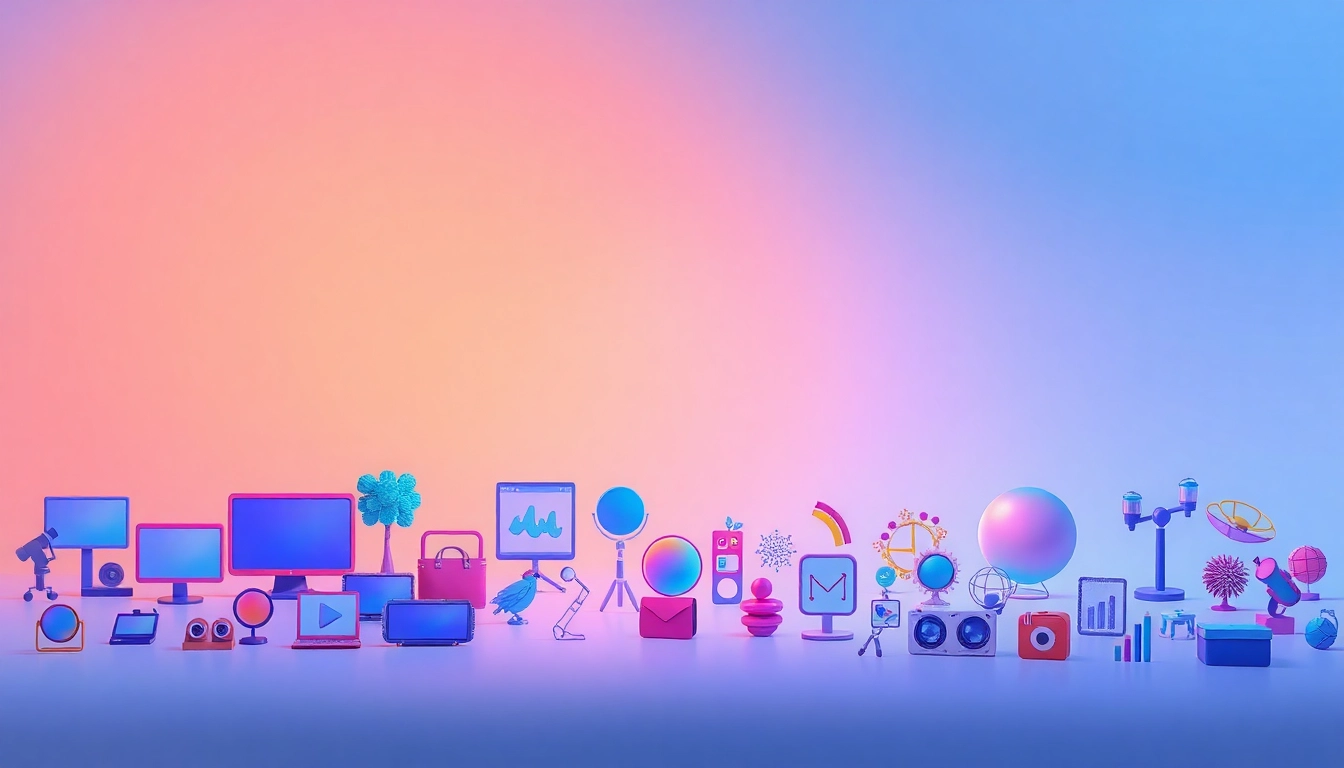Understanding Icons and Their Importance
Icons serve as essential components in modern design, offering a visual representation of concepts and actions that enhances user experience across various platforms. By simplifying intricate information into recognizable symbols, icons enable effective communication that resonates with users. As a testament to their importance, organizations, educational institutions, and cultural entities—such as the Icons displayed in museums—utilize them to convey messages succinctly and powerfully.
Definition and Types of Icons
At their core, icons are graphic representations that stand for an idea, object, or action. They can be categorized into several types, including:
- Basic Icons: Simple representations of universally understood objects or actions, such as a trash can for delete actions or a pencil for editing.
- Brand Icons: Unique and recognizable symbols associated with companies or organizations, such as the Apple logo or the Twitter bird.
- Functional Icons: These indicate system functions, like the settings gear icon or the load spinner.
- Informational Icons: Icons used to convey information, including alerts and notifications that enhance the user’s understanding of the current state of the application.
The Role of Icons in Communication
Icons play a pivotal role in communication, especially within digital interfaces. They transcend language barriers, enabling users from diverse backgrounds to interact with a product more intuitively. The use of icons can greatly enhance information retrieval, as users can quickly locate features or understand complex systems without requiring extensive explanations. This can lead to increased user satisfaction and reduced cognitive load, making interactions smoother and more efficient.
User Interaction with Icons
Understanding how users interact with icons is crucial for designing effective interfaces. Research indicates that people tend to remember visual elements better than text. Therefore, employing icons strategically can aid users in navigating applications or websites. Moreover, position, size, and color play vital roles in user interaction; appropriately sized icons are more clickable, and using contrasting colors can draw attention to essential features.
Design Principles for Effective Icons
Color Schemes and Icon Design
The color scheme used in icon design significantly influences user perception and interaction. Colors evoke emotions and can direct user attention effectively. For example, bright colors can enhance visibility and attraction, while muted tones may suggest functionality and professionalism. When designing icons, it is essential to maintain a cohesive color palette that aligns with the overall aesthetic of your product while ensuring contrast for accessibility.
Creating Intuitive Icons
Intuitive icons are easily understood and recognized. The design should focus on familiar shapes and symbols that users can associate with specific actions or items. For instance, a heart shape is universally recognized as a symbol for “favoriting” or “liking” something. Furthermore, it is critical to avoid overly complex designs; simplicity often leads to more recognizable and functional icons that serve their intended purpose effectively.
Consistency in Iconography
Consistency across an application or website is vital in icon design. Users familiarize themselves with a set style, understanding the meaning and function behind each icon as they navigate. Inconsistencies can lead to confusion and hinder usability. Therefore, it is recommended to develop a style guide that delineates rules surrounding icon size, color, and positioning, ensuring uniformity across your platform.
Where to Source High-Quality Icons
Free vs. Premium Icons
When sourcing icons for your projects, you’ll encounter both free and premium options. Free icons often come with restrictions concerning usage and modification but can be suitable for personal projects or smaller applications. Premium icons, on the other hand, generally offer higher-quality graphics, more extensive libraries, and fewer restrictions, making them ideal for commercial projects. Assess your needs and budget carefully to determine the best path for acquiring icons.
Best Websites for Icon Downloads
There are numerous online repositories where designers can source high-quality icons. A few noteworthy platforms include:
- Flaticon: Offers over 18 million vector icons, suitable for various design needs.
- Icons8: Provides a broad range of free icons (including animated variants) that maintain consistent visual quality.
- Noun Project: An extensive library featuring millions of icons created by designers from around the world.
Licensing and Usage Guidelines
It is imperative to understand the licensing agreements associated with icon downloads. While many platforms offer free icons, they often require attribution or have usage restrictions. Always read the terms of service carefully before integrating icons into your projects to ensure compliance and avoid potential legal issues.
Implementing Icons in Digital Products
Integrating Icons in User Interfaces
Incorporating icons into user interfaces requires careful consideration of usability and aesthetics. Icons should complement the overall design without overwhelming the user. A well-thought-out placement strategy is essential; for instance, primary actions should be depicted with larger, prominent icons, while secondary actions can utilize smaller or more subdued icons. Conducting user testing can provide valuable insights into optimal icon integration.
Icons for Mobile vs. Web Applications
Designing icons for mobile and web applications necessitates different considerations. Mobile icons must be larger to accommodate touch interactions and must consider varying screen sizes and resolutions. Conversely, web icons may be designed for scalability, ensuring clarity on larger displays without losing quality. Designers should prioritize responsiveness to ensure functionality across platforms.
Testing User Experience with Icons
User testing is critical to ensuring that icons effectively communicate their intended actions. Usability tests can reveal whether users understand the symbols as intended, helping identify areas for improvement. Techniques such as A/B testing can evaluate different icon designs side by side to determine which one engages users more effectively.
Future Trends in Icon Design
Minimalism and Iconography
The trend towards minimalism continues to gain momentum in icon design. Clean lines, simple shapes, and limited color palettes appeal to users’ preferences for clarity and ease of understanding. Minimalistic designs can enhance user experience by removing clutter and allowing users to focus on essential actions without distraction.
Animated Icons and User Engagement
Animated icons are becoming increasingly popular as they add a dynamic element to user interfaces, making interactions more engaging. Subtle animations can indicate loading states or successful actions, providing a feedback mechanism that enhances user experience. However, it is essential to balance animation with performance to avoid hindering the speed of interfaces.
Accessibility Considerations in Icon Design
As digital inclusivity becomes a priority, accessibility in icon design cannot be overlooked. Designers should ensure that icons are easily discernible for individuals with visual impairments. Guidelines such as providing alternative text descriptions for icons and maintaining contrast standards are critical for ensuring access to all users. Consulting accessibility frameworks like the WCAG can provide insight into best practices for creating inclusive iconography.



